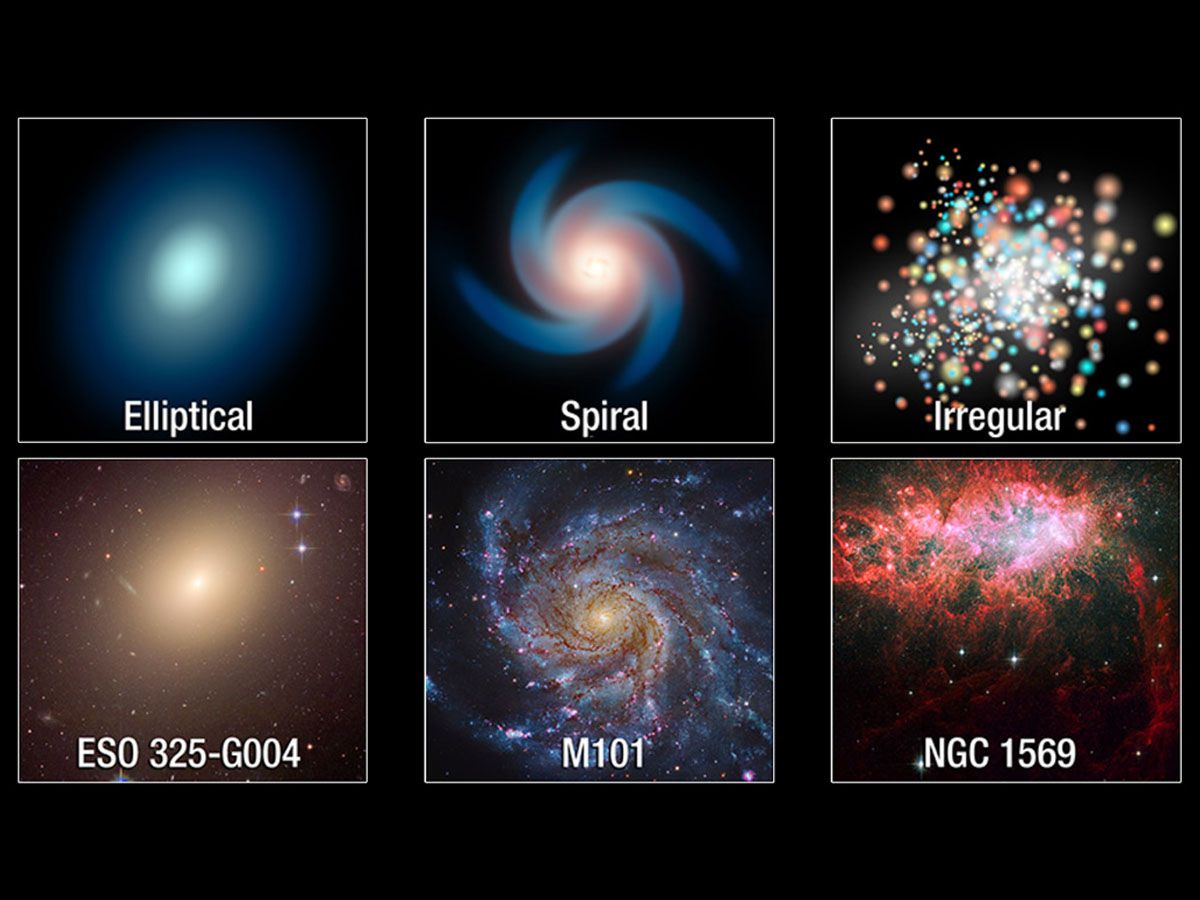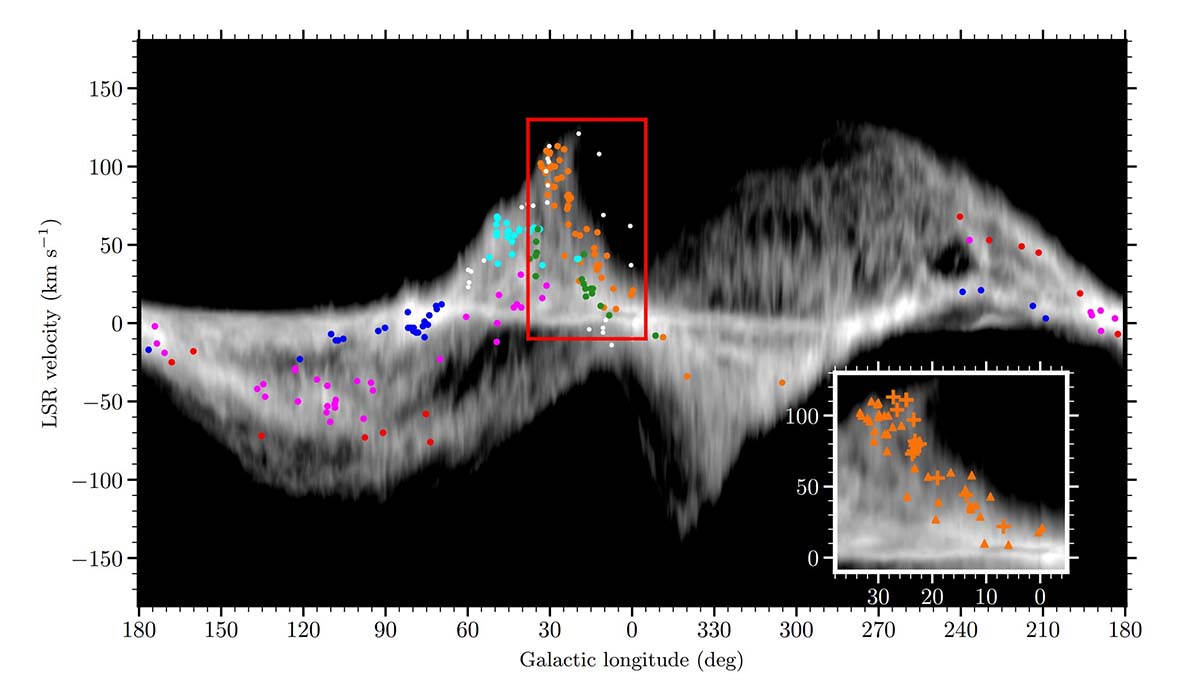Have you ever gazed into the night sky, awed by the beautiful splashes of starlight that we call the Milky Way? For centuries, we've tried to grasp its mystifying structure. You may have heard of it as a four-armed spiral galaxy, an image deeply embedded in our collective cosmic consciousness.
But, hold onto your telescopes, stargazers! We're about to embark on a thrilling cosmic journey that shakes up this age-old belief. A groundbreaking study from China is turning heads and telescopes alike, challenging our very perception of our celestial neighborhood.
The Conventional View of the Milky Way
Imagine unspooling a glittering celestial ribbon across the cosmos, coiling it into a pinwheel with four gleaming arms spiraling out from a dense, central core. This image has been the textbook portrayal of our Milky Way galaxy. A four-armed spiral galaxy, intriguingly distinct, enthralling astronomers and cosmic enthusiasts alike.

But why the fascination, you might wonder? Well, galaxies of this ilk are the cosmic equivalent of a four-leaf clover, exceedingly uncommon. This unique configuration places our galactic home on an intriguing pedestal, touting it as an extraordinary exception in the vast cosmic realm.
Understanding Galaxy Shapes
To appreciate the novelty of a four-armed galaxy, let's dip our toes into some galactic morphology. Galaxies, those colossal star clusters whirling across the cosmic dance floor, primarily flaunt three dress codes.
Some come as elliptical blobs, devoid of any well-defined structure, appearing like hazy cotton balls against the backdrop of space. Others, the irregular galaxies, are the cosmic rule-breakers, conforming to no specific shape, making them the rebels of the celestial world.

Then, we have the grand spiral galaxies, the belle of the cosmic ball. These are meticulously crafted cosmic whirls with two principal arms emerging from a central bulge, elegantly spiraling outwards.
These arms are a cacophony of stars, gas, and dust, swirling in a galactic symphony. So, you see, our four-armed Milky Way is like a peacock strutting among pigeons, undeniably rare and intriguing.
The New Research on Milky Way's Structure
Our cosmic tale takes an exciting twist courtesy of Ye Xu and his colleagues from the Purple Mountain Observatory in Nanjing, China. They challenged the established depiction of the Milky Way, raising the curtain to a different galactic performance. It wasn't an overnight revelation but a diligent process, backed by meticulous research, a stack of star maps, and a healthy dollop of curiosity.
Their astronomical toolkit was a marriage of traditional observational methods with the latest technology, including very long baseline interferometry, a fancy term for a method that accurately gauges distances to celestial objects.
Additionally, they tapped into the treasure trove of data from the Gaia space observatory, a jewel in the European Space Agency's crown.

Their research canvas was studded with a fascinating array of celestial objects, primarily stars. They delved into the data of over 200 stars known as masers, which bathe the cosmos with their microwave emissions. Alongside these, they analyzed nearly 24,000 hot, massive O-B type stars, the universe's own high-powered lamps.
Furthermore, they took into account the positions of almost a thousand open clusters, groups of stars bound by gravity, akin to cosmic families. In this star-studded investigation, the researchers sought to unmask the true face of our Milky Way.
Findings of the Research
After some intense cosmic sleuthing, Ye Xu and his team reveal their compelling findings. Drumroll, please... Our Milky Way galaxy isn't an extravagant four-armed spiral, but rather, a modest two-armed barred spiral.
What does that mean, you wonder? Well, imagine two dominant arms, the Norma and Perseus arms, sweeping out from a dense, elongated central bulge, forming the galaxy's main structure.
Now, let's talk about the rest of the family. The other arms, Centaurus, Sagittarius, Carina, Outer, and Local are kind of like distant relatives. They have drifted away over the eons, detaching from the main structure. These offshoots, having encountered galactic collisions and mergers, are fragmented and irregular, weaving a complex tapestry across the sky.
But wait, we're not quite done! There are still intriguing mysteries left to untangle, like a suspenseful cosmic cliffhanger. The origin of the Norma and Perseus arms, for example, remains a hot topic of discussion. Are they truly extensions of the dense, central bar, or is there another origin story waiting to be told?
Implications and Future Directions
This groundbreaking research weaves a new narrative for our Milky Way, propelling it from an outlier to an emblem of the ordinary. A galaxy like any other, with two main arms and additional minor arms, placing it in the more common category of multiple-arm galaxies. Now, it appears the Milky Way's formation might not be as distinctive as we thought, aligning more with the cosmic norm than previously believed.
But don't hang up your telescopes yet! The story of the Milky Way is far from over. The ongoing vigil of the celestial realm by Gaia and other space observatories is poised to continuously refine our understanding of the 3D structure of our galaxy. Each new data point, each starlight flicker, and each celestial whisper unravels another thread in the vast cosmic tapestry.
Launched in 2013, the Gaia spacecraft, a tireless cosmic cartographer, will continue its mission until at least 2025. Its observations and data are sure to add more detail to our understanding, continually reshaping our perception of the Milky Way. It's a splendid reminder that our journey through the cosmos is just beginning, and there's much more to discover and explore!
Source: arxiv.org / discovermagazine.com / space.com / phys.org












